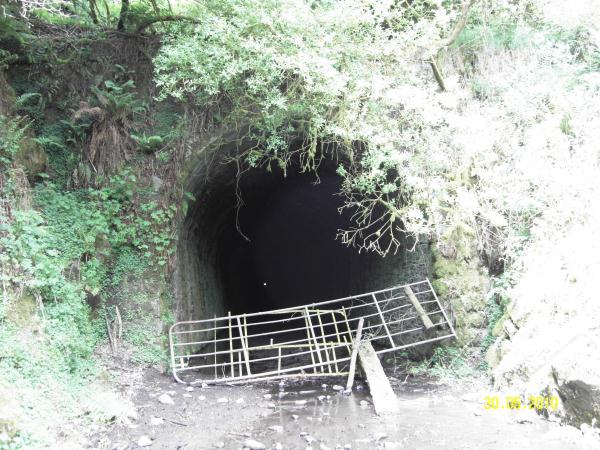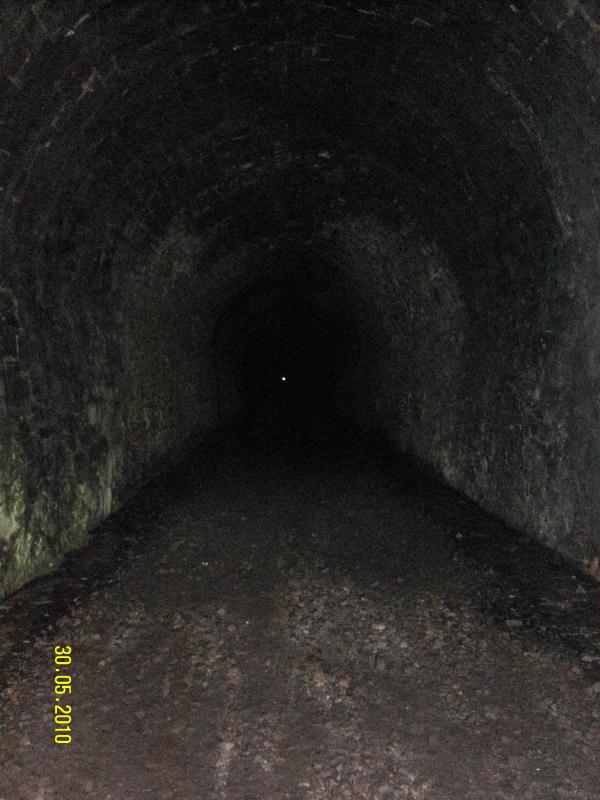Armagh - Goraghwood Branch
Line

Financial mismanagement, political deception and
human tragedy. The history of the Armagh and Newry Railway has all
the ingredients of a modern drama.
The Newry and Armagh Railway line construction
began in 1846 by the 'The Newry and Enniskillen Railway Company'
and was finally completed 22 years later under the auspices of the
'The Newry-Armagh Railway Company.'
As early as 1826 a survey was commissioned to
evaluate a railway link between Newry and Armagh, signifying the
economic importance of Newry as a port, but it was not until August
1846 that, having received the necessary parliamentary approval,
work commenced on the first section of the line between Newry and
Goraghwood. It was, however, to take a full seven years before the
work was completed, a section of a mere 3 miles. In contrast,
during this period there had been considerable progress on the
construction of other lines. Two years earlier in 1852 the 'Dublin
and Belfast Junction Railway Company, ' which had been formed the
same year as the Newry Company, had completed construction of the
63 mile line to link the Ulster Rail line at Portadown and the
Dublin-Drogheda line at Drogheda. £135,000 had been spent on the
line to Goraghwood (railways were being constructed at that time
for under £20,000 per mile) and it became obvious in 1856 that
there was no prospect of the line paying its way unless it was
extended beyond Goraghwood. The net revenue for the second half of
1856 was £3 ! A major overhaul of the company took place and it
re-emerged in 1857 as 'The Newry-Armagh Railway
Company.'
A proposal was made to extend the line to Armagh
and a plan was drawn up and laid before Parliament for a 22 mile
line with stations at Drumbanagher, Loughgilly, Markethill and
Hamiltonsbawn, and a short tunnel at Loughgilly. That plan proposed
that the line would pass through Drumbanagher Demense. The land
owner, Colonel Close had demanded £20,000 compensation, but when
the final plans were presented it was declared that, as evidence of
the good will of the landed gentry to the construction of the
railway, Colonel Close had withdrawn his claim. After the bill to
extend the line was passed in August 1857, it then came to light
that that Colonel Close's decision to withdraw his claim for
compensation had only come about when the Company had agreed that
the line would not proceed through the demense but that instead a
tunnel would be constructed to take the line through Lissummon
Hill. After much efforts to secure financing through share
debentures, work on the line finally commenced in October
1861.
Lissummon Tunnel
The major undertaking on the line was of course
Lissummon Tunnel. Originally, it was planned to be 1604 yards long,
but was subsequently extended to 1,759 yards, 1 yard short of 1
mile, making it the longest tunnel in Ireland. It was a
considerable engineering operation which involved the sinking of 6
shafts along the line and mining and boring through rock from each
shaft. The location of some of these shafts is still marked today
with mounds of the excavated rock etc, though most of it was taken
away to construct roads. Where they are still visible, they show
the line of the tunnel from where it enters the hill behind
Drumbanagher Church to where it emerges on the Loughgilly side of
the hill.
A number were miners brought across from England
to work in the tunnel, and this resulted in several disturbances to
varying degrees during the course of construction, the most notable
being in 1863 when a large number of Irish labourers who allegedly
returning from England having been ejected by English labourers for
having taken English jobs on English soil, decided to exact
retribution by doing the same to the English labourers at
Lissummon. The local militia were dispatched and peace finally
restored.
As already mentioned, a shorter tunnel was
constructed at Loughgilly, as well as an embankment across
Loughgilly bog. The line finally reached Armagh in March 1864, but
because agreement could not be reached with the Ulster Rail Company
on the use of their station, a temporary station was constructed on
the outskirts of the town and passengers had to be ferried in. The
line finally opened on 25th August 1864.
Financial problems persisted, and just four years
after it opened it was bought by the Great Northern Railway
company.
In my opening paragraph I had mentioned human
tragedy, and less than ten years after coming under the banner of
the GNR, the line was to become not only national, but world news,
when, on 12th June 1889, on the steep gradient outside Armagh there
occurred the worst railway accident in the history of Irish
railways, when a train carrying a Sunday School outing crashed
killing 80 and injuring some 300 people. More details can be found
on the cache related to this disaster.
The line continued in operation until 1933 when,
following a strike, the passenger service between Goraghwood and
Armagh was withdrawn, and the Armagh - Markethill section closed
completely. Goods traffic continued on the Markethill to Goraghwood
section until 1957, and in 1965 the line closed
completely.
Some facts and numbers about Lissummon
Tunnel:
At 1759 yards (1608 metres) long - 1 yard short of a
mile - it is the longest railway tunnel in Ireland.
It is perfectly straight and runs approximately in a SE-NW
direction. From one end you can see the light at the other.
It is lined throughout with stone and brick and along the north
wall are safety alcoves at 20 yard intervals.
The track rises throughout the tunnel at a gradient of 1:75 (a
climb of approximately 70 feet over the length of the
tunnel).

If you do decide to explore the tunnel please
exercise caution. Access is easiest from the southern (Jerretspass)
end where the cache is located. At the northern end, there is a lot
of undergrowth, very wet boggy ground and a lot of rubble. The
stonework in the tunnel is actually in very good condition, (a
testament to the builders) and there is not so much dripping water,
but don’t expect to stay completely dry in the middle section
of the tunnel ! The track-bed is in reasonably good condition with
a large amount of the ballast on which the sleepers lay still in
place. It is fairly well trodden. Artificial light is needed to aid
your walk. On the day that we placed the cache we walked to the
northern end and back again. The return journey is easier as you
have a 70 foot descent over the length of the tunnel !
Have fun, be careful, and enjoy this hidden gem of our industrial
heritage.
(Many thanks to Bawnman for conceding this cache
as we were both initially planning the same
thing).
The Cache
As you can see from the pictures the entrance to the
tunnel does not exactly have a red carpet ! Although it will dry a
bit during the summer months, the southern end where the cache is
located (and which is the more accessable entrance) is always wet
given that it is the lowest piece of ground both in relation to the
tunnel as well as the hill. Dress accordingly ! Your starting point should be at the waypoint listed. There is
adequate space to park. Once over the gate walk 10 yards and then
bear left into the field and downhill to the cache. There is one
hedgerow to cross to reach the tunnel entrance. The cache is a small tab-locked box in a camouflaged bag. It is
suitable for small swaps. When placed it contained a notebook and
pencil for logging, a FTF prize and a couple of small swaps. Cache
ratings reflect the ground conditions and the steep hill to climb
up again after !
A mcc42 & bup42 joint production.